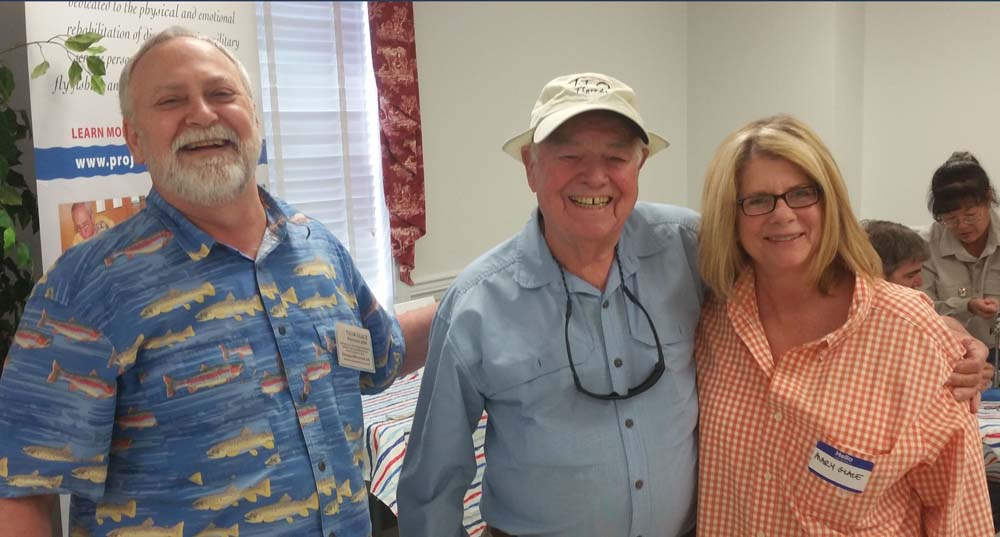
Thom Glace, Lefty Kreh, and Mary Glace at a Pennsylvania Fly Fishing Show.
The following profile and interview with Thom Glace precedes the opening celebration of the Kings Gap Environmental Education Center’s recognition of artists inspired by nature which hallmarks Thom Glace as the Featured Artist.
Few people can take severe health adversity in stride and become stronger and more engaged in life than before. Thom Glace is one such person who meets all the criteria for fighting back. Glace, a successful international businessman, had his career stop in one second. A massive heart attack took him out of the corporate world and out of play. He was dead for several minutes but came around and recovered.
Thom, in an interview, said, ‘I will not waste my second chance with life.’ He contributes framed originals and prints to support conservation and grants use privileges of images and products. His contributions promoting Trout Unlimited are a list too long. Thom said, ‘Supporting conservation projects with framed originals of my work produces some of the greatest rewards.’
Glace, as many know, is an extraordinary watercolorist illustrator, a fly fishing devotee, and a generous contributor to conservation causes.

Getting set up at the Kings Gap Mansion and gallery. Thom, the featured artist, will be doing demonstrations for the show October 2, 9, 16, 23, and 30.
FLM: Thom, where were you brought up and schooled?
TG: I’m a native of Central Pennsylvania and raised in a 1700s limestone farmhouse that survived Indian attacks. My father had a consulting civil & sanitary engineering company and worked overseas a lot, letting us see the world but have a home base as an anchor. At 16, I went to a boarding prep school, Peddie School in New Jersey, and got introduced to quite a world than the Amish farming community of Central Pennsylvania.
FLM: Where did you go to college?
TG: I went to the University of North Carolina and earned a BA from Carolina’s famous School of Journalism and Media in 1974.
FLM: When did art enter your life?
TG: I always collected art and sketched in pencil. My father was an outstanding amateur oil painter. During my career after college, I worked in advertising and had a graphic arts production company in North Carolina and the Virgin Islands. My marketing assignments became global and including an ex-pat assignment in The Netherlands. I did not get into painting until I recovered from a catastrophic heart attack. That was 18 years ago. After a year in bed- I took up the hobby of watercolors for busy work.
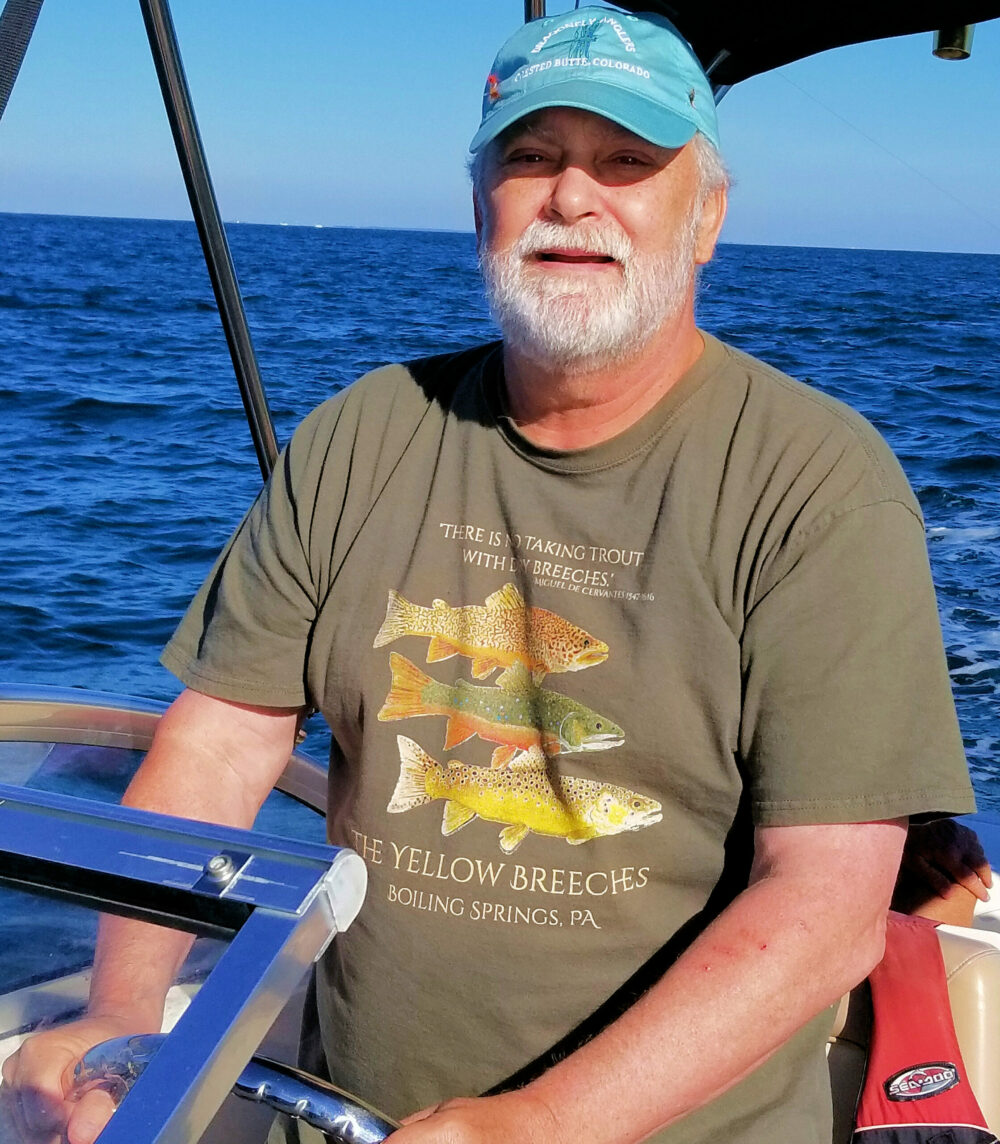
Capt. Tom at the helm searching for albies off the coast of North Carolina.
FLM: What got you into fly fishing?
TG: Experiences enjoyed when my family spent time in the Caribbean and my dad taught us snorkeling. The undersea world fascinated me. I was swimming by age two, snorkeling by six, SCUBA diving by twelve, and certified by NAUI in 1972.
Fly fishing did not enter the picture until I was in my 40s. Then, my wife gave me a present of Orvis fishing lessons at a shop on the Yellow Breeches, near our home. After that, I fell in love with the art of fly fishing. I am still a much better fish painter than a fisherman, but I found you don’t have to catch a fish to enjoy fly fishing.
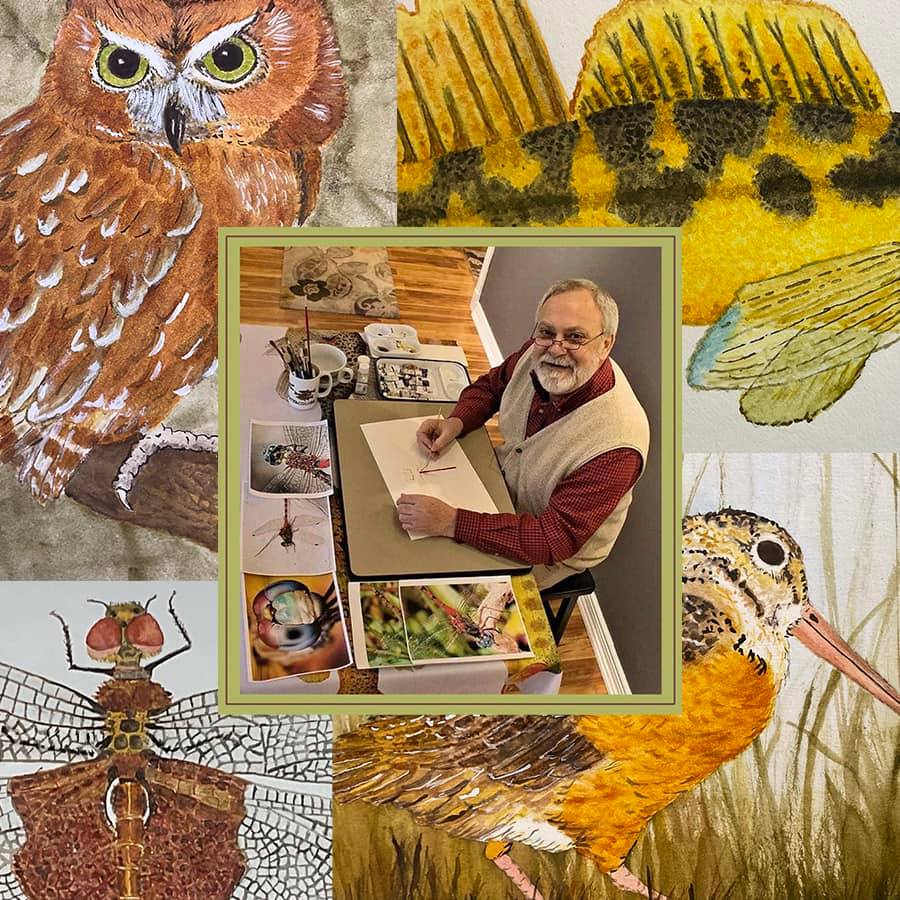 INTERVIEW
INTERVIEW
FLM: Were there any traditional artists that influenced you?
TG: Yes, Archibald Thorburn FZS, a British watercolor artist specializing in birds and animals during the decades before WWI, Georges Pierre Seurat [Pointillism], and Phil Bean, a contemporary New Hampshire oil and watercolor artist.
FLM: It seems you have taken a long and circuitous route, returning to your native Central Pennsylvania and starting an art career.
TG: I lived in various locations, including North Carolina, New Hampshire, St. Croix USVI, and the Netherlands. After college, I worked at a publishing firm, a newspaper, and two ad firms, including my own in Greensboro, and managed a firm in the Virgin Islands. I also taught college at the University of the Virgin Islands and wrote several television shows in the Caribbean region. Eventually, my marketing & sales assignment in the Netherlands took me to over 50 countries. It was an unsustainable workload. So, 19 years ago, I had a massive heart attack and was forced to retire on disability. And that got me started doing watercolors to regain physical capacities and stay busy. My hobby took off.
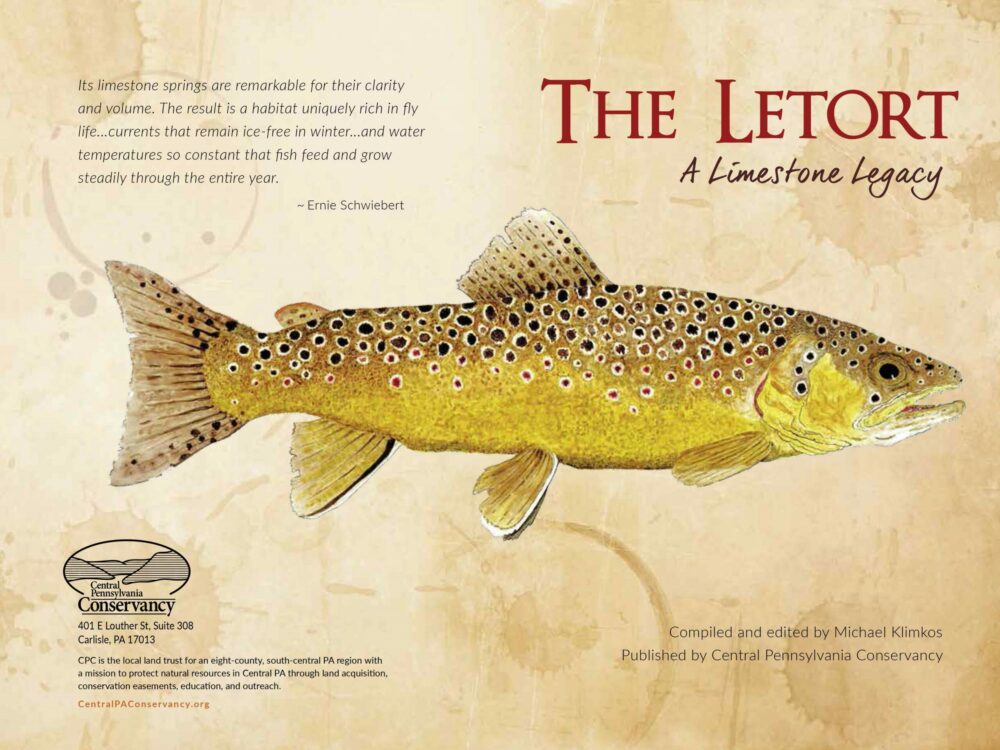
Book cover.
FLM: Why did you concentrate on watercolors?
TG: Due to my heart condition, I do not have the energy of an average person and need to rest a lot. With acrylics and oil, your paint dries up. With watercolors, you add water and are back in business, which suits my temperament.
FLM: Why did you specialize in transparent watercolor studies of fish and dragonfly species?
TTG: My love of nature. At first, as a boy with the beauty of the underwater creatures scuba diving. Then, after my introduction to Orvis Fly Fishing School, my love of trout & salmon has grown like Kudzu.
After many of these fish studies, I branched out to dragonfly studies. I enjoyed the challenge of the delicate features of insect anatomy, especially in the various wing patterns.
FLM: What is the Biological Study Format? What does it entail for you?
TG: It’s showing a species by itself in all its glory. I started with local species, which has expanded to paint everything from the peacock bass of the Amazon, and the marble trout of Slovenia to the masu (Cherry) salmon of Japan, then painted the mayfly and stonefly insects.
Once in a while, I break away to paint an Assateague Island wild horse or a Megalith in Ireland or Wales. Now, I’m interested in songbirds and shorebirds.
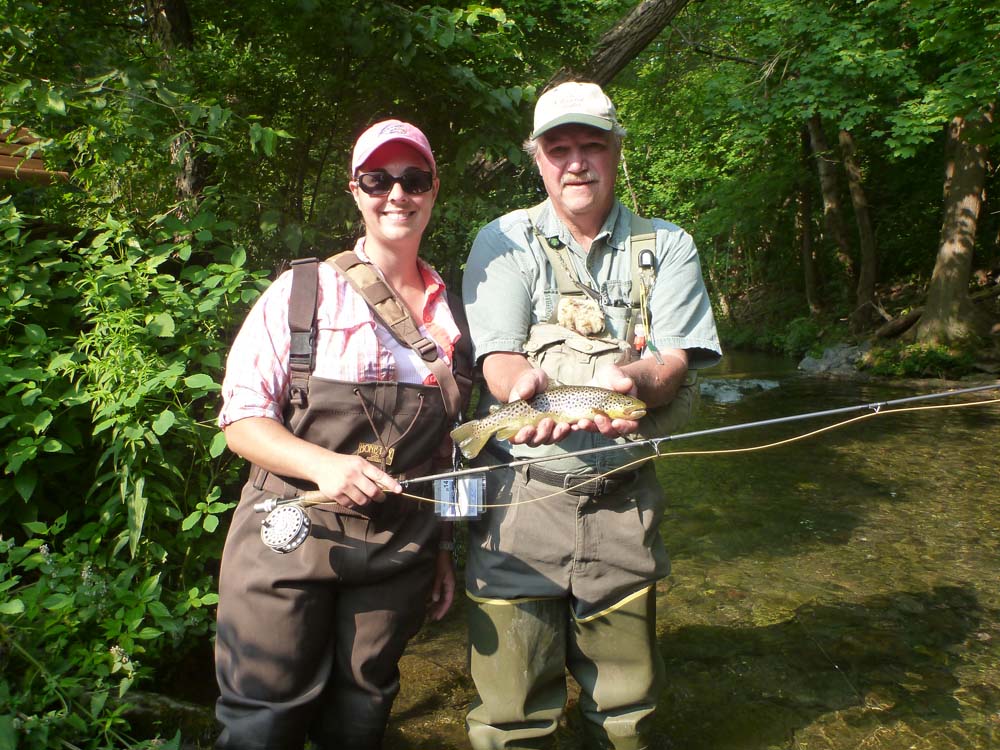
Always best to hire a guide. Yellow Breeches is ‘down the hill’ from the Kings Gap Mansion. Bring your fly rod.
I paint a transparent watercolor style, almost 100% dry brush on a watercolor board. Unfortunately, this method has no forgiveness; one mistake or blotch means starting over again
Thom Glace has participated in art shows and exhibitions throughout New England, Texas, Virginia, Maryland, West Virginia, New York City, North Carolina, and Pennsylvania. He has also been a featured artist: in Harrisburg Magazine, Montana Trout Magazine, Southern Trout Magazine, Fly Life Magazine, where he was named 2017 Artist of the Year, Fly Dreamers, Mid-Atlantic Fly Fishing Guide, MidCurrent Publications, Virginia Wildlife Magazine, and was 2016 Artist of the year for Tenkara USA Magazine. Additionally, Thom was named the Festival Artist for the 2014 Virginia Fly Fishing Festival. In 2016 and 2017, Thom Glace was the Festival Artist for the Cape Lookout Albacore & Redfish Festival in Morehead City, NC.
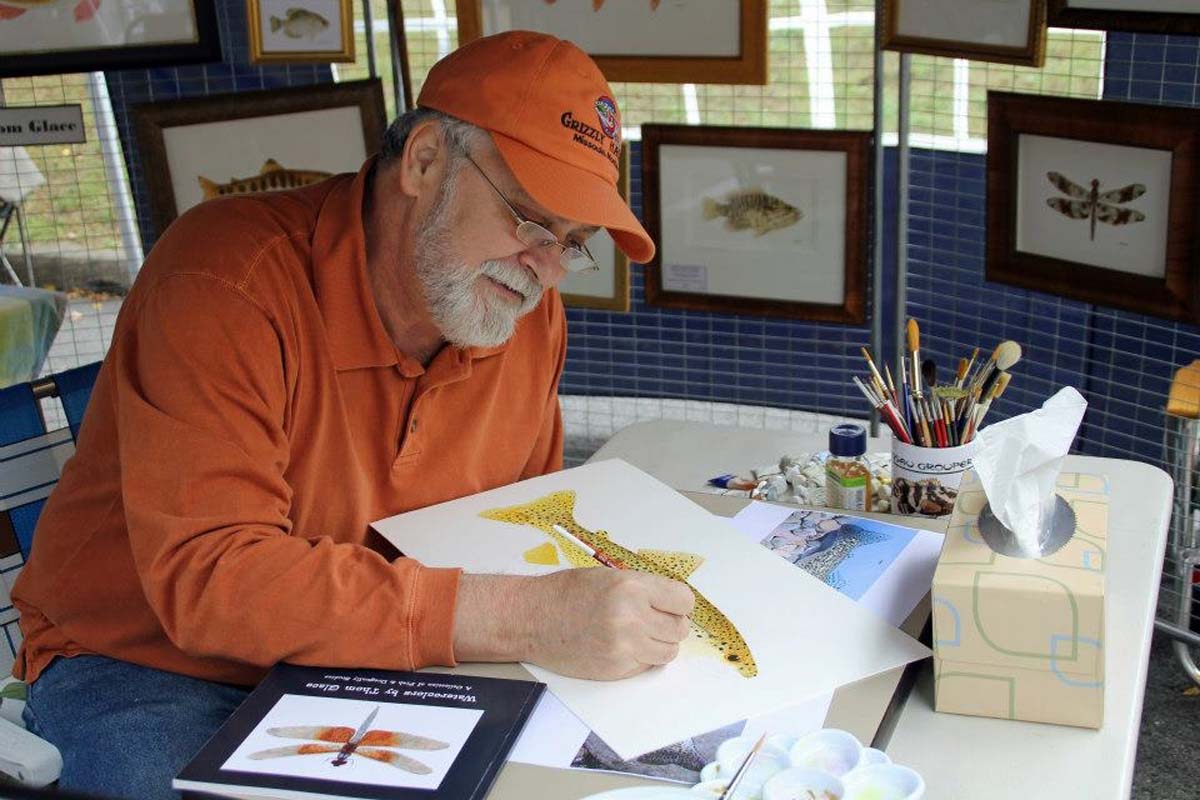
Thom’s watercolor studies of fish, dragonflies, and birds now hang in galleries and shops in Maryland, Montana, New Hampshire, North Carolina Outer Banks, Florida. And Pennsylvania’s Boiling Springs, New Cumberland, Millhiem, Lancaster, Mount Holly Springs, and Camp Hill.
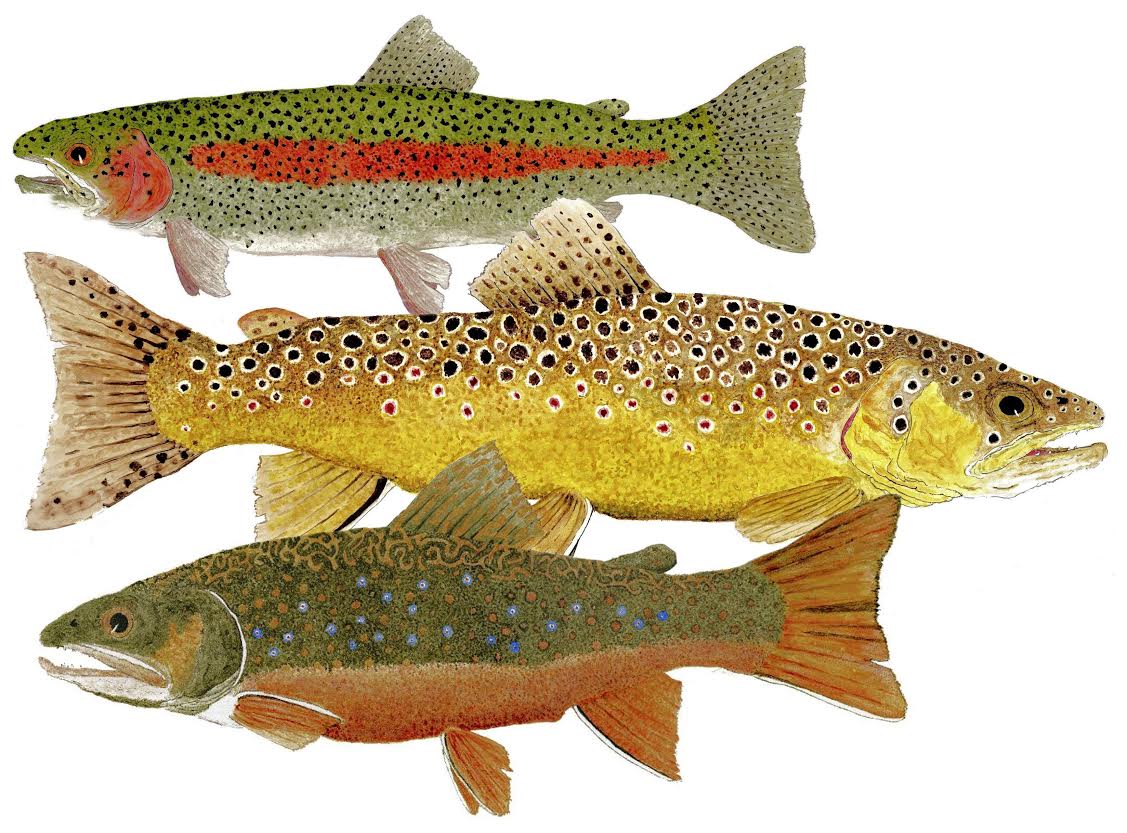
Rainbow, Brown, and Brook. The rainbow is a westerner by birthright and includes the steelhead, and the brook is a native easterner, but it is not a trout. It’s a char with Maine and Eastern Canada, where the big boys get caught. This illustration by world-renowned watercolorist Thom Glace.

Male March Brown Dun Mayfly. Illustration provided courtesy of Thom Glace.

Remember where you are when at Kings Gap Mansion; you are of the Yellow Breeches and the Letort, where this Salmo Trutta was caught and released – a commissioned work by Thom Glace.

